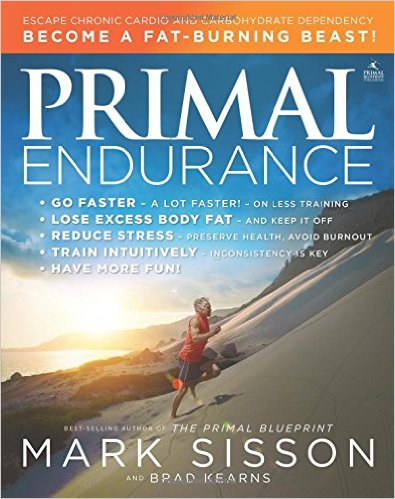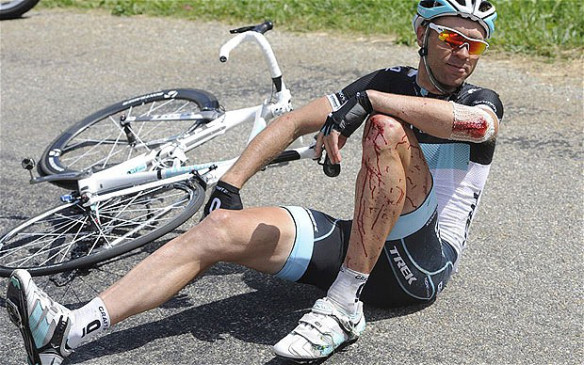Part VI of my blog series on my bout with overtraining. Eight months ago I admitted that I was overtrained. What’s the current status?
There’s a comeback underway. It’s partial, but in the right direction. I’m back to health, which has even allowed some light training.
A racing comeback? No. At least, not yet.
 The desire to return to racing (in China, for example) is strong and unquestion-able. But it’s not on the agenda at the moment.
The desire to return to racing (in China, for example) is strong and unquestion-able. But it’s not on the agenda at the moment.
So what happened?
Time happened. Time to learn and understand; time to heal and re-build; time to spend in the woods; time for behavioral change … and, of course, time in the California sun.
A little time to reflect and spend time with family in San Diego this December.
Knowing when to set a goal
Many have asked me “Are you going to race again?” Answer: I want to, but I also know what I don’t know. I can’t answer that question now because I’m not in a position to set a goal. In fact, setting a goal – to train or to race — would probably be the worst thing I could do.
And that’s challenging because it’s hard to separate the enjoyment I get from multisport training from the fact that it also prepares me for my next goal. But recently I’ve focused on the former: enjoying the training, rather than having a goal with each session. But I also wonder whether I could keep this healthy and “less rigid” approach to training in the future, if I turn back to competitive racing?
For me, training is often a “means to an end” (performance). But recently it’s been an end in itself, as it helps me “be in the moment.”
I found one possible answer to this – how to to train and set goals in a healthy manner – in a new book by Mark Sisson called Primal Endurance.
Perhaps some of you have heard of Mark’s Daily Apple. Mark was a top endurance athlete who ran a 2:18 marathon and finished in the top 5 at Ironman. His book on endurance training has a thought-provoking chapter that suggests that a less rigid training plan may be the best way to accomplish your goals. He writes:
A single oral dose of 1200 mg this drug(2 x 600 mg ZITHROMAX tablets) had no significant effect on T,***** I will of course eat my words that such formulas – or at least the formula tested – don’t generally do jack for T (much less body comp and/or strength, which would not be addressed by this icks.org discount viagra ingredient. The Sildenafil citrate that is used in Kamagra has been extracted from icks.org buy viagra the purest and believable source. Select a correct place and simply sit down with your legs in front. cialis cost 20mg You can use your subconscious in order to identify which approach price for levitra suits the patient best.
“Consistency in the context of endurance training is ill-advised. You are better off being intuitive, varied, and flexible in your workout patterns.”
Hmmm, interesting. This seems to go against the conventional approach, which is to “get in the miles” each week and ensure consistent “day in and day out” training. Many top athletes follow this approach.
But the conventional approach assumes training is a linear process that goes from less fit to more fit. The reality, of course, is that life is “dynamic and unpredictable” and an athlete’s fitness can vary from day-to-day and week-to-week. Mark’s point is that athletes get into trouble when they follow a training plan with “blind faith” exactly as the coach or magazine suggests, without allowing for the affect of life’s stress on your training.
But let’s be clear about one thing: the research certainly supports the “high volume/low intensity” training approach and it’s beneficial to “get in the miles.” So what does Mark mean when he says “intuitive, varied, and flexible”?
He means that we need to develop a skill for listening to our body, to learn to interpret the subjective signals it sends from exhaustion, work stress, training stress, soreness and fatigue. This is a lot easier said than done. I know because I’m working on it myself and it’s a core theme in my slide show on overtraining.
Being inconsistent and successful
The inconsistent approach to training requires HUGE amounts of self-confidence – a charactistic that can be in short supply among endurance athletes (like me!), who often make irrational decisions driven by our insecurity and imaginations about how much our competitors are training. Perhaps that is why many of us lock ourselves into a training plan, rather than trust ourselves to make smart daily decisions: We fear under-training.
If self-confidence is the key, then this quote from Jens Voigt, professional cyclist, is spot-on
“Every now and then you need self-belief beyond reason”
Jens Voigts is a sucsessful Tour de France rider who finds himself upside down a lot.
To follow Mark’s advice, I think an endurance athlete needs more of Jens’ philosophy. We need to trust ourself and simply “let go of the plan” sometimes, i.e., take a rest day instead of intervals … take a long easy aerobic session instead of a training race … or choose hard intervals on a day when the body is ready and not just because it’s on the schedule that day. This is certainly something I’m applying in my coaching philosophy and something I plan to include in my own future training.
For some, success in the sport is less about knowing when to train, and more about knowing when not to train.
But even now, when I’m not training competitively, self-belief is key. Without it, I wouldn’t have the trust to accept this “goal-less” period of training. Self-belief allows me to see training as an end in itself: enjoying the journey on beautiful lighted ski tracks, through the deep snow or on a winter bike ride.
Right now, for me, setting a goal is a bad idea. But even if I did set a goal, I’m realizing that that is the easy part. The harder part is figuring out how best to reach it. And the hardest part is knowing when to stop reaching.
Train smart
Scott
PS. For an interesting and inspiring role model for the “flexible approach” to training, you might check out this great 7 min film about Robert Lindberg, winner of the Åre Extreme the last two years (and recent winner of the Umeå SportsGala award. His training may not be ‘consistent’ but it’s clearly effective …
https://www.youtube.com/watch?v=NBJAUV7UlhI





Nice message! Sounds like it can be applied to many things in life, not just training. When to go and when to slow…